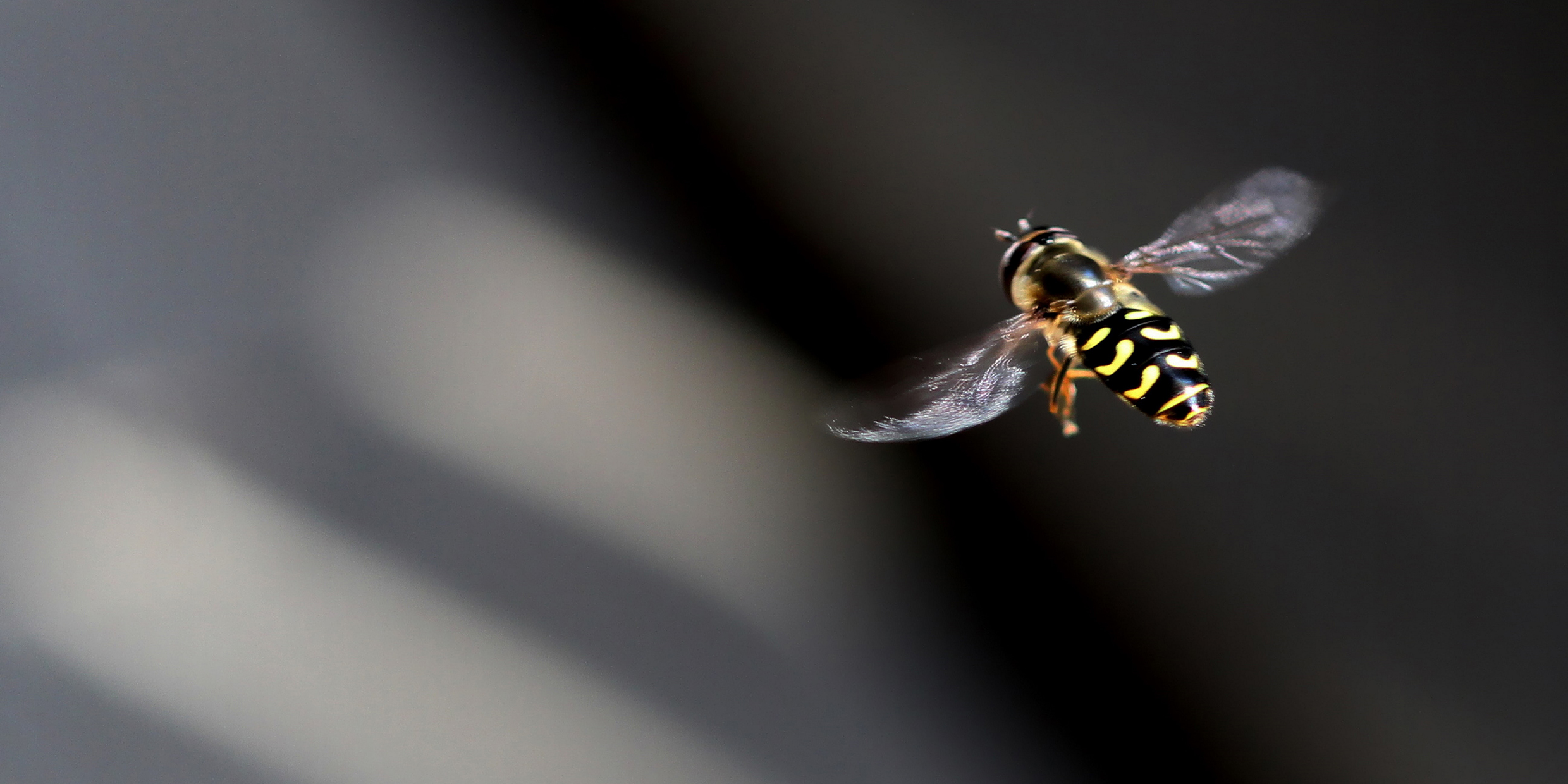Originally published 12 July 1999
Summertime, when the livin’ is buggy.
Mosquitoes. Black flies. Yellowjackets. No-see-ums.
And, of course, the house fly, that dirt-footed summertime pest, who does par excellence exactly what its name suggests.
What all these wretched little terrors have in common is the gift of flight. There’s no escape. From wherever they are, they know where we are, and as quick at you can say “aeronautical perfection” they have sunk their stingers into our flesh.
Birds fly, too, of course. And bats, those furry mammals. Pterodactyls, extinct winged reptiles, were aviators, or at least they knew how to do a terrific glide. Certain fish put on a good imitation of winged flight. Last winter in the Caribbean I saw a “flying fish” that stayed aloft above the waves for what seemed an impossibly long time.
But insects were the first animal to evolve active flight, and they’re still champs when it comes to maneuverability. They can take off backwards, fly sideways, land upside down, and make love on the wing.
The question is: How do they do it?
For birds and bats the answer is fairly straight forward. The physics of airplanes more or less applies. A wing with an aerodynamic shape is cocked into the wind. A single vortex of air flowing around the wing generates lift. And if the wing is flapping, well, then this more complex behavior can be broken down into consecutive instances of airplane-like flight.
In other words, an aeronautical engineer can pretty much tell you how birds and bats fly.
But things get rather more complicated with insects, especially the tiny ones, according to biologist Robert Dudley, writing in the journal Nature. The viscosity of air becomes the problem now. As Dudley says, it’s like trying to swim in molasses. Can you imagine a human swimmer in molasses having the agility of a gnat?
Mount a stationary gnat’s wings in a wind tunnel, as aeronautical engineers are wont to do, and the measured forces are substantially smaller than those needed for staying aloft, much less for flitting about. Whatever a gnat is, it’s not an airplane.
Lots of theories have been generated to explain insect flight, involving upstroke and downstroke, rapid wing rotation and rotation reversal. Scientists talk of something called “clap and fling,” where the wings come together on the upstroke in a way that helps generate lift on the downstroke. Clap and fling is well and good, but, still, no one is quite sure how the critters fly.
Dudley’s essay in Nature introduced new experimental work on fruit fly flight by biologists Michael Dickinson and Sanjay Sane of the University of California, and Fritz-Olaf Lehmann of the University of Würzburg am Hubland in Germany.
Dickinson, Sane, and Lehmann built a scale model of fruit fly wings, each wing somewhat larger than a human hand, with attached multiple motors that give them motion about three independent axes. To make them dynamically equivalent to the wings of a tiny insect in air, they put the whole apparatus in a vat of viscous oil. At the base of one wing were sensors that measured instantaneous forces.
Then they set the apparatus going — flapping and spinning, clapping and flinging.
Out of all of this the biologists came up with a theory of insect flight that focuses on three mechanisms: delayed stall, rotational circulation, and wake capture. Never mind exactly what these are; what’s important here is that we now have a better experimental notion of how insects fly.
So what? Well, for one thing, we can take a certain philosophical delight in the complexities of insect flight while we are laying awake at night with that mosquito buzzing near our ear. The buzz is the audible physics of delayed stall, rotational circulation, and wake capture, an ingenious mechanics of flight contrived by insects before a pterodactyl ever thought of gliding off a cliff, never mind the Wright Brothers.
Other more practical possibilities present themselves. Aeronautical engineers supported by the Defense Department have been giving a lot of attention to building miniature flying machines, called microair vehicles, smaller than a human hand, which might make use of these newly revealed secrets of insect aerodynamics. And nanoengineers, who think small have envisaged flying machines so tiny that they can be seen only with a microscope.
If you think summer is buggy now, wait a generation or so until some troublemaking neighbor lets loose an aerial armada of nanoflyers — $29.95 a dozen at Walmart — mechanical stingers to disrupt your barbecue, undeterred by bug spray, rub-on creams, or smoking citronella.



